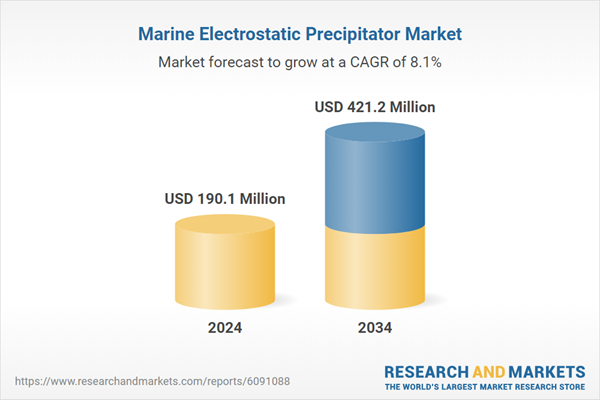As the global shipping industry navigates the shift towards green solutions and carbon reduction targets, the demand for ESP systems is intensifying. These systems play a crucial role in limiting airborne particulate emissions from marine diesel engines, helping vessels meet evolving international emission standards. With continued investments in next-generation propulsion and emission control technologies, the market for ESPs is set to maintain a strong growth trajectory. This trend is fueled by the need for shipping operators to balance operational efficiency with regulatory compliance. Additionally, growing awareness about the negative impact of exhaust particles on marine ecosystems is prompting further adoption of pollution mitigation technologies onboard ships.
However, the market does face some short-term challenges, particularly rising production costs driven by tariffs on imported components and materials. These increased input costs may delay some fleet operators’ investment decisions. Despite this, the long-term need to comply with stringent emission regulations ensures the continued demand for ESP systems. As governments enforce stricter emission caps and promote sustainable shipping practices, the adoption of ESP systems will remain essential for compliance and operational viability.
Regarding design trends, plate-based electrostatic precipitators are expected to see a CAGR of 7.5% between 2025 and 2034. Their superior ability to capture fine particulates and withstand the harsh maritime environment makes them a preferred choice. Dry electrostatic precipitators held an 86.2% share of the market in 2024, favored for their operational efficiency, lower maintenance needs, and ease of integration into various types of vessels. The rising focus on meeting global emission guidelines ensures continued adoption, especially for retrofitting existing fleets and new vessel constructions.
The U.S. Marine Electrostatic Precipitator Market reached USD 23.8 million in 2024, driven by strong regulatory pressures to curb maritime pollution. Federal initiatives supporting sustainable shipping practices and investment in green port infrastructure have fueled the adoption of ESP systems in U.S. waters. As environmental compliance becomes increasingly important along U.S. shipping corridors like the coasts of California and the Gulf of Mexico, the demand for efficient particulate filtration technologies is growing steadily.
Key players in the global marine electrostatic precipitator industry include Mitsubishi Heavy Industries, GEA Group, Sumitomo Heavy Industries, KC Cottrell India, McGill AirClean, Kraft Powercon, Valmet, Siemens Energy, Fuji Electric, and Andritz Group. These leading companies prioritize durability, compact design, and corrosion resistance, offering high-performance systems that can withstand extreme oceanic conditions. By focusing on modular system configurations and collaborating closely with shipbuilders and engine manufacturers, these companies continue to enhance their market position through tailored, cost-effective solutions.
Comprehensive Market Analysis and Forecast
- Industry trends, key growth drivers, challenges, future opportunities, and regulatory landscape
- Competitive landscape with Porter’s Five Forces and PESTEL analysis
- Market size, segmentation, and regional forecasts
- In-depth company profiles, business strategies, financial insights, and SWOT analysis
This product will be delivered within 2-4 business days.
Table of Contents
Companies Mentioned
The companies featured in this marine electrostatic precipitator market report include:- ANDRITZ GROUP
- Fuji Electric
- GEA Group
- KC Cottrell India
- Kraft Powercon
- Mitsubishi Heavy Industries
- McGill AirClean
- Sumitomo Heavy Industries
- Siemens Energy
- Valmet
Table Information
| Report Attribute | Details |
|---|---|
| No. of Pages | 127 |
| Published | April 2025 |
| Forecast Period | 2024 - 2034 |
| Estimated Market Value ( USD | $ 190.1 Million |
| Forecasted Market Value ( USD | $ 421.2 Million |
| Compound Annual Growth Rate | 8.1% |
| Regions Covered | Global |
| No. of Companies Mentioned | 11 |









